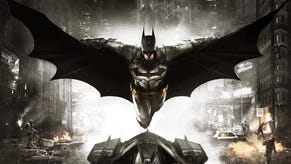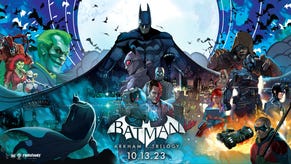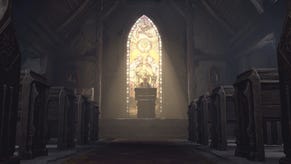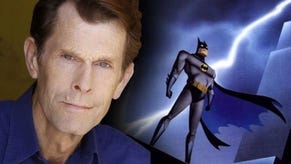Batman: Arkham Asylum
Hospitality.
In some ways, Batman is the comic book hero most suited to videogames. Unlike Superman, he's not irritatingly invulnerable; unlike the Hulk, no-one expects him to do anything too CPU-intensive, like destroy an entire city; most importantly, unlike Spider-Man, he isn't saddled with a phoned-in Tobey Maguire voice track that makes him sound like he's battling evil while strung out on Co-codamol. Instead, all Batman needs is a natty cape, two fists, and access to the world's most elaborately deadly issue of the Innovations catalogue.
But look deeper, and it's not so simple. Batman, above all other superheroes, is defined by a particular mood, a brooding eternal midnight built from shadows, claustrophobic alleyways and Halloween freaks; a world, in a word, of fear. It's not just a case of turning down the lights and breaking a few windows, either: you can't fake Gotham City's stylish urban menace, and you can't fake the sense of dread that Batman engenders in his foes. And if you haven't got dread in your Batman game, chances are you haven't actually got a Batman game.
That's why Arkham Asylum is looking promising. It's got the brooding architecture and famous faces, but it's also fitting out its hero as a man who lets his fearsome reputation do a lot of the work for him: in close combat, he can't be beaten, but when the weapons come out, although he can certainly take a few more machinegun rounds than I could, compared to most videogame characters he's made out of old Kit-Kat wrappers and Marmite. With no magic powers, he has to spook his foes, freaking them out and softening them up before swooping in to finish the job.
This curious mixture - flashes of real power wedged tightly against moments of extreme weakness - seems likely to define the pace of the title, but it's currently hard to tell how well the combination will work in the long term. The developers, Rocksteady Studios, are still not ready to reveal exactly how the story fits together, so for now, we can only get a sense of Arkham Asylum's central mechanics by playing two of the game's challenge rooms.
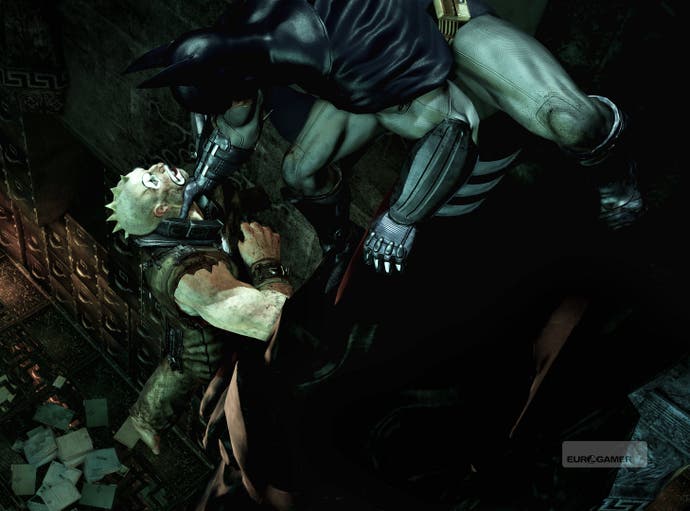
Challenge rooms are just one flavour of over 250 unlockables Rocksteady's threatening to include in the finished game. Dumping you into a discrete part of Arkham and asking you to complete a task (generally clubbing everybody senseless), they're the Dark Knight's take on arcade games: a chance to break away from the central story, and explore simple joys like score multipliers and leaderboards.
At the very least, they suggest that this is one attractive loony bin, filled with pretty dereliction and inviting shadows, peopled by a range of terrifying freaks who appear to have gone insane after a diet composed of tattoo ink, face paint, and steroids. It's often overstated just how much the Unreal Engine guides the look of a game - Epic's tech was capable of turning out Mirror's Edge's lithe chimney-hoppers as well as Gears' rock-fisted grunts, but there's a certain shock of the familiar the first time you see the hulking lump of Batflesh you will be controlling. Massive and weighty, it's initially hard to picture this particular caped crusader swinging from the rafters without bringing most of the roof down as well, but once you see him in motion, all of that changes.

Crucially, the animation delivers, smoothly flowing between cycles without a frustrating glitch or much in the way of clipping, and the team has perfectly nailed that distinctive blend of grace and brutality that Batman deals in. Zipping up to a distant ledge on the grapnel gun, he's a blur of black and grey, but in the middle of a fight, surrounded by deranged bouncers, he has a frosty, businesslike calm straight out of the comics, patiently waiting for an enemy to move, before parrying in a flash and retaliating with a series of efficient blows. Meanwhile, his cape is a separate character in its own right, whipping about, stunning enemies into a cowering huddle, and generally making him look like a hardboiled Darth Vader rather than a jumpsuited weirdo in an S&M dressing gown.
It's brawling that the first of the challenge rooms focuses on. Intensive Treatment (both rooms have the kind of punning titles that might make the Dark Knight let out a mirthless chuckle) is essentially a hand-to-hand variation of Gears 2's Horde mode, matching you off against increasingly deadly combinations of bad 'uns and asking you not just to flatten everyone (which is easy) but to flatten them while looking good (which isn't).



